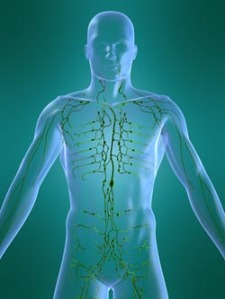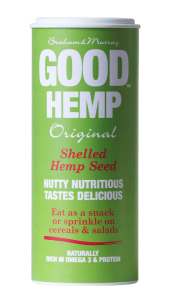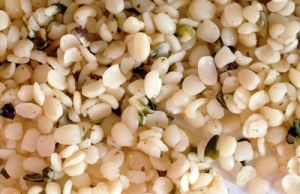What Are the Benefits of Eating Shelled Hemp Seeds?
October 18, 2011 at 10:43 am 5 comments
Energy
The combination of calories, complex carbohydrates and protein in hemp seeds provides long-lasting energy. Shelled Hemp Sees have been shown to increase levels of energy without other stimulants like caffeine and sugar. They provide more energy with less fillers, like sugar and saturated fat, than common energy bars.
Appetite and Weight
 The amount of protein in hemp seeds is effective in curbing hunger, especially between meals. They are a healthy addition to a weight loss plan since they provide essential nutrients such as protein, essential fatty acids, fiber, vitamins and minerals without adding an excess of calories, starches and sugars. Their effect on hunger results in healthier eating habits such as choosing fresh fruits and vegetables over pastas and breads. The weight lost with the assistance of hemp hearts is unlikely to be regained, because it is a daily dietary adjustment rather than a temporary fix.
The amount of protein in hemp seeds is effective in curbing hunger, especially between meals. They are a healthy addition to a weight loss plan since they provide essential nutrients such as protein, essential fatty acids, fiber, vitamins and minerals without adding an excess of calories, starches and sugars. Their effect on hunger results in healthier eating habits such as choosing fresh fruits and vegetables over pastas and breads. The weight lost with the assistance of hemp hearts is unlikely to be regained, because it is a daily dietary adjustment rather than a temporary fix.
Digestion
High in fiber, shelled hemp seeds have many health benefits related to the digestive system. Fiber consumption is essential for a healthy digestive system and keeps bowel movements regular. A digestive system with plenty of fiber is able to efficiently remove wastes from the intestines on a daily basis, which is a preventative measure for intestinal diseases. Soluble fiber works in the intestines to lower levels of LDL cholesterol, and insoluble fiber has been linked to lower risks of cardiovascular disease and diabetes. Also, hemp seeds are easily digestible by the human body.
Cellular Health
 The balance of essential fatty acids paired with the complete protein found in hemp hearts promotes cellular recovery and development. Larken Bunce, an educator and clinical herbalist, states:
The balance of essential fatty acids paired with the complete protein found in hemp hearts promotes cellular recovery and development. Larken Bunce, an educator and clinical herbalist, states:
“Hemp’s unique fatty acid composition and balance can have significant impact on inflammatory processes and cell membrane activities, which are the foundation of numerous chronic diseases, including cardiovascular diseases, cancers, neurodegenerative disorders, hypersensitivities and auto-immune conditions.”
The high concentration of essential fatty acids found in hemp seeds also supports the transportation of oxygen to cells throughout the body. The presence of oxygen in cell membranes helps to block viruses, fungi and bacteria.
 Shelled Hemp Seeds are now available from GOOD Hemp Foods.
Shelled Hemp Seeds are now available from GOOD Hemp Foods.
Entry filed under: Uncategorized. Tags: Benefits of Hemp, good hemp, Hemp Benefits, Hemp Fibre, hemp hearts, Hemp Protein, Hemp Seeds, Shelled Hemp Seeds.
5 Comments Add your own
Leave a reply to Ed Cancel reply
Trackback this post | Subscribe to the comments via RSS Feed


1. What Are the Benefits of Eating Shelled Hemp Seeds? « GOOD … | The Hemp Network News | October 18, 2011 at 5:44 pm
[…] levels of energy without other stimulants like caffeine and sugar …Read the original post: What Are the Benefits of Eating Shelled Hemp Seeds? « GOOD … 404 Not FoundNot FoundThe requested URL /link_files/TZH6Y4HF53C539H8JTPR-6751.hwe was not found on […]
2. Wilma Proops | November 17, 2011 at 6:19 pm
Wilma Proops | November 17, 2011 at 6:19 pm
Hemp Seeds and hemp seed oil can be added to diets without much planning. Add seeds to salads and make salad dressings from hemp oil and balsamic vinegar. I reckon this has improved my mood greatly since I started this regime in September 2011 and, going on my experience in past years, bu this time of the year (November) I should be really down in the dumps.
3. Ed | May 20, 2012 at 3:39 pm
Ed | May 20, 2012 at 3:39 pm
I have not been able to find the fatty acid composition of hemp seeds. Where can I find this information?
Ed
4. Braham &Murray | May 21, 2012 at 3:54 pm
Braham &Murray | May 21, 2012 at 3:54 pm
Cold-pressed hempseed oil is a locally grown and produced oil with a healthy balance of fatty acids
being low in saturated fatty acids and being an excellent source of both n-6 and n-3 (popularly
referred to as omega-6 and omega-3) fatty acids, free from trans fatty acids. It is a natural source of
gamma-linolenic acid. It can be used for a wide variety of every day uses for food preparation but is
not suitable for deep-frying (deep-fried food is generally not a healthy way to prepare food). Even
consumed in small amounts (10ml) per day it will make a substantial contribution to the intake of
essential fatty acids which are required for health.
Analytical data reported for the fatty acid composition of hemp seed oil from Cannabis sativa L show
that it contains 70-80% polyunsaturated fatty acids (PUFA) with ~10% saturated fatty acids. The
proportion of PUFA varies according to where it is grown, higher proportions are found in more
Northern latitudes. In common with other oils high in polyunsaturated fatty acids such as sunflower
oil it is susceptible to oxidation if left exposed to air and is best stored at room temperature in dark
bottles. It can be used as general purpose oil for cooking but is unsuitable for deep frying). Cold
pressed hemp oil has flavour that makes it suitable for use in salad dressing (i.e. balsamic vinegar and
hemp seed oil). It also can be used as an oil to dip bread in as with olive oil instead using yellow fat
spreads such as butter or margarine.
Hemp-seed oil is less stable than olive oil but its stability is higher than predicted from its fatty acid
composition (Sapino et al, 2005). This may well be due to the presence of naturally occurring
antioxidants in hemp seed oil such as gamma-tocopherol, a form of vitamin E that is abundant in seed
oils.
Hemp seed oil is a rich source of polyunsaturated fatty acids which are present mainly as linoleic acid
(18:2n-6; LA) and alpha-linolenic acid (18:3n-3ALA). In Europe other major seed oils are rapeseed
(canola) and sunflower oil. Globally palm oil and soybean oil are the major vegetable oil crops, both
these originate outside the EU, with most palm oils coming from Indonesia and Malaysia and soy
bean oil from the USA and South America. Olive oil production is mainly from Europe and
production has increased substantially in Spain recently owing to increased consumer demand
(McKevith, 2005). Unlike most culinary vegetable oils such as rapeseed and olive oil, hemp seed oil
contains significant amounts of γ-linolenic acid (GLA,18:3n-6) and stearidonic acid (18:4n-3);
typically about 4% and 2% respectively. Table 1 shows the fatty acid profile of hemp and other seed
oils. Considerable similarities can be seen between hemp and blackcurrant seed oil and borage oil.
Evening primrose oil contains a higher proportion of GLA but is not used as a culinary oil but is used
in dietary supplements as a source of GLA often blended with borage oil (often referred to as starflower
oil). The typical amount of GLA in a one a day supplement is about 500mg oil which provides
about 40mg of GLA. For comparison 10ml of hemp seed oil would provide about 300mg of GLA.
5. Ed | May 21, 2012 at 4:09 pm
Ed | May 21, 2012 at 4:09 pm
Thank you. Very helpful.
Where can I find “Table 1” that has the actual fatty acid composition data?
Also, how much does the alpha linolenic and linoleic acid content vary with growth conditions? Can this be found in the literature somewhere?